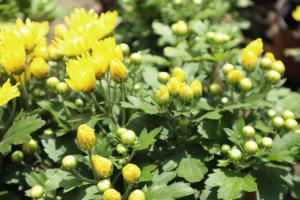How Close Can You Plant Aspen Trees?
Aspen trees are a popular choice for visually appealing landscapes, wood production, and windbreaks. If you're considering adding aspen trees to your property, you might be wondering how close you can plant them. In this article, we'll explore some key factors to consider when spacing aspen trees and provide some tips on how to achieve healthy, vibrant growth in your aspen stand.
Factors That Affect Spacing Requirements
Several factors influence the spacing requirements of aspen trees. First, it's essential to consider the mature height and canopy spread of the tree species you're planting. For aspen trees, the mature height can range from 40-80 feet, while the canopy spread can extend from 20-40 feet. Therefore, a standard spacing requirement for aspen trees is 20-40 feet apart.
Additionally, planting density depends on the intended purpose of the trees. If you're growing aspen trees for wood production, you'll want to plant them more densely than you would for visual aesthetics or windbreaks. For instance, a spacing range of 10-12 feet for wood production can encourage taller, straighter trees and more massive basal area production. Alternatively, for ornamental or windbreak purposes, a 30-40 feet spacing range is more ideal for a visually appealing grouping or effective wind protection.
How to Plant Aspen Trees
When planting aspen trees, it's crucial to pay attention to soil quality and moisture levels as these are critical factors in tree survival and growth rate. Aspens prefer well-drained soils and moist environments but can adapt to different types of soils, including clay and sandy soils. When planting aspen trees, space them at the recommended spacing requirements, applying mulch around the base to help retain moisture and suppress weed growth.
Aspens can also tolerate cold temperatures, making them ideal for planting in northern climates that experience harsh winters. Ensure you plant aspens during the spring or fall, giving the roots ample time to establish before winter. To find the optimal planting time for your area, you can consult with your local arborist, extension office, or the city or county forestry service.
Caring for Aspen Trees
After planting aspen trees, they require some care to ensure they grow healthy and strong. Weed around the base of the trees regularly, prune any damaged or diseased branches, and water the trees during drought periods. Moreover, monitor the trees for pests, such as insect infestations and diseases that may occur, and take timely action to ensure tree health. Aspens are susceptible to cankers and rust diseases such as black canker, cytospora canker, and Marssonina leaf spot, which can impact tree health, reduce productivity, and affect overall tree aesthetics. Working with an experienced arborist can help identify these issues early and prevent any significant damage.
Conclusion
Overall, aspen trees provide a beautiful and functional addition to any landscape. When planting aspen trees, consider the mature height and canopy spread, intended purpose, and recommended spacing requirements. With proper planting techniques, adequate care, and monitoring, aspen trees can thrive for decades and provide numerous environmental benefits.

 how many times do yo...
how many times do yo... how many planted tre...
how many planted tre... how many pine trees ...
how many pine trees ... how many pecan trees...
how many pecan trees... how many plants comp...
how many plants comp... how many plants can ...
how many plants can ... how many plants and ...
how many plants and ... how many pepper plan...
how many pepper plan...






























